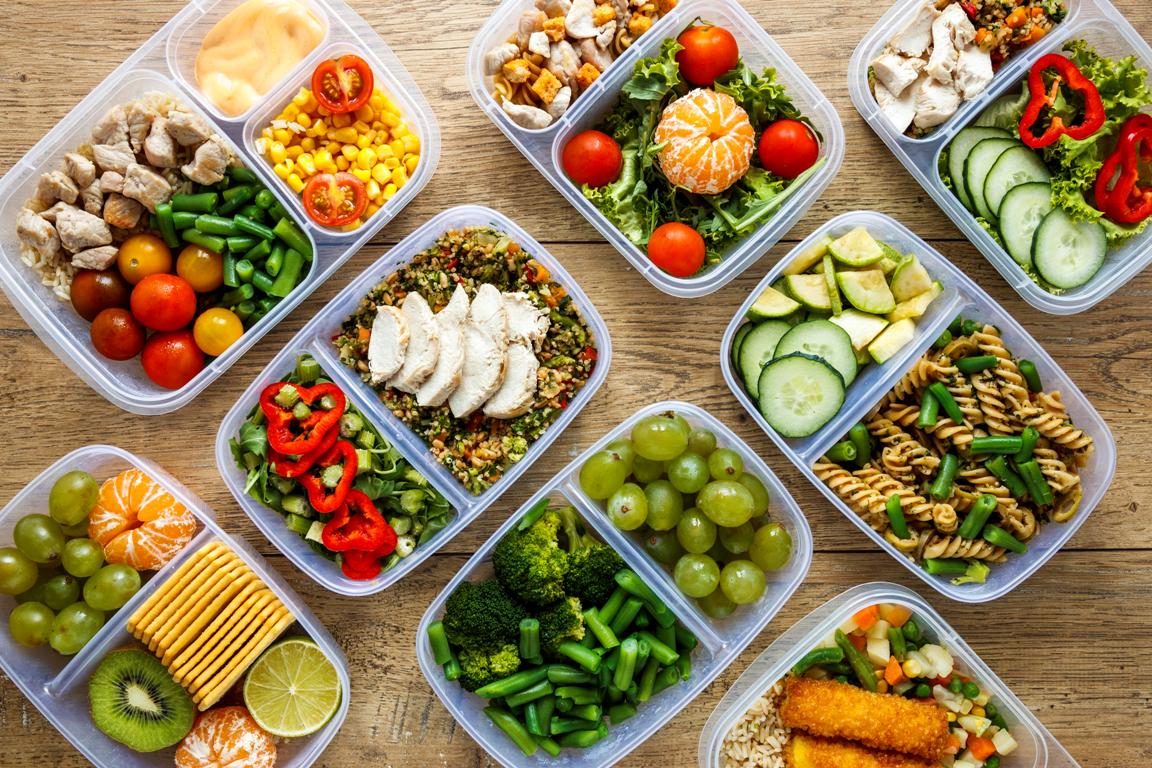Table of Contents
- Introduction
- Understanding the Keto Diet
- The Concept of Cycling in Dieting
- Factors Influencing the Frequency of Keto Breaks
- Signs It’s Time for a Break
- How Often Should You Take a Break from Keto?
- Implementing a Break from Keto Safely
Key Takeaways:
- Understanding the keto diet is crucial before considering breaks.
- Cycling in dieting involves strategic breaks to prevent plateaus and burnout.
- Factors like health, diet duration, and activity levels influence break frequency.
- Recognizing signs of burnout or metabolic adaptation indicates the need for a break.
- Frequency of keto breaks varies based on individual needs and goals.
- Safely implement breaks with proper transition and dietary strategies.
Introduction
The keto diet has gained immense popularity for its effectiveness in weight loss and various health benefits. However, amidst the zeal for ketosis, the question arises: how often should you take a break from keto? Understanding the importance of periodic breaks is essential for sustaining long-term adherence to this dietary regimen. In this comprehensive guide, we delve into the intricacies of the keto diet, the concept of cycling in dieting, factors influencing break frequency, signs indicating the need for a break, and practical strategies for implementing breaks safely.

Understanding the Keto Diet
Understanding the Keto Diet
The ketogenic diet, or keto diet, is a high-fat, low-carbohydrate eating plan designed to induce a metabolic state called ketosis. In ketosis, the body primarily burns fat for fuel instead of carbohydrates, leading to rapid fat loss and increased energy levels.
How It Works and Its Benefits
The keto diet works by drastically reducing carbohydrate intake and replacing it with healthy fats and moderate protein. This restriction of carbohydrates forces the body to enter ketosis, where it produces ketones from fat stores to fuel the brain and muscles.
Potential Side Effects of Long-Term Keto Dieting
While the keto diet offers numerous benefits, such as weight loss, improved insulin sensitivity, and enhanced mental clarity, it’s essential to recognize the potential side effects of prolonged adherence to this dietary regimen. These may include:
- Keto flu: Common symptoms experienced during the initial transition to ketosis, including fatigue, headaches, and nausea.
- Nutrient deficiencies: Limited intake of certain fruits, vegetables, and grains may result in inadequate micronutrient levels.
- Thyroid imbalances: Some individuals may experience disruptions in thyroid hormone production, affecting metabolism and energy levels.
- Muscle loss: Inadequate protein intake or prolonged ketosis may lead to muscle wasting over time.

The Concept of Cycling in Dieting
The Concept of Cycling in Dieting
Diet cycling, also known as intermittent dieting or cyclical dieting, involves alternating between periods of calorie restriction and periods of maintenance or surplus. This approach aims to prevent metabolic adaptation, weight loss plateaus, and psychological burnout commonly associated with long-term dieting.
Benefits of Taking Breaks from Keto
Periodic breaks from the keto diet offer several benefits:
- Metabolic flexibility: Cycling in and out of ketosis enhances metabolic flexibility, allowing the body to efficiently utilize both carbohydrates and fats for fuel.
- Prevention of plateaus: Interrupting prolonged ketosis with carbohydrate refeeds can prevent metabolic slowdown and weight loss plateaus.
- Improved adherence: Taking occasional breaks from strict dietary restrictions can improve long-term adherence to the keto diet by reducing feelings of deprivation and monotony.
How Breaks Can Impact Weight Loss Plateaus
Weight loss plateaus are a common concern among individuals following the keto diet. These plateaus occur when the body adapts to reduced calorie intake and metabolic rate decreases, leading to stalled progress. Incorporating planned breaks from keto can effectively break through these plateaus by:
- Boosting metabolic rate: Carbohydrate refeeds stimulate the production of thyroid hormones and increase metabolic rate, revving up fat burning.
- Restoring glycogen stores: Reintroducing carbohydrates replenishes depleted glycogen stores, preventing muscle loss and enhancing workout performance.

Factors Influencing the Frequency of Keto Breaks
Factors Influencing the Frequency of Keto Breaks
The frequency of keto breaks varies from person to person and depends on several factors:
- Individual Health and Goals: Individuals with specific health conditions or performance goals may require more or fewer breaks from the keto diet. Consultation with a healthcare professional or nutritionist is recommended to determine the appropriate frequency.
- Length of Time on Keto Diet: Long-term adherence to the keto diet may necessitate more frequent breaks to prevent metabolic adaptation and maintain progress.
- Physical Activity Levels: Individuals engaging in intense physical activity may benefit from more frequent breaks to replenish glycogen stores and support muscle recovery.
Signs It’s Time for a Break
Recognizing signs indicating the need for a break from the keto diet is crucial for preventing burnout and maintaining overall well-being. Common signs include:
- Plateaued Weight Loss: Stalled progress despite adherence to the keto diet and calorie deficit may indicate the need for a metabolic reset.
- Fatigue and Low Energy: Persistent fatigue, lethargy, or decreased workout performance may signal depleted glycogen stores and the need for carbohydrate replenishment.
- Cravings and Food Obsession: Intense cravings for carbohydrates or recurrent thoughts about non-keto foods may suggest psychological burnout and the necessity of a dietary break.
How Often Should You Take a Break from Keto?
How Often Should You Take a Break from Keto?
The frequency of taking breaks from the keto diet varies depending on individual factors and goals. While there is no one-size-fits-all approach, general guidelines can help determine an appropriate break frequency:
- Every Few Weeks: Some individuals may benefit from taking a break from keto every few weeks, typically lasting 1-2 days. These short breaks can help prevent metabolic adaptation and promote adherence.
- Every Few Months: Others may opt for longer breaks every few months, lasting 1-2 weeks. These extended breaks allow for greater glycogen replenishment and metabolic reset.
- Based on Signs and Symptoms: Listen to your body and pay attention to signs indicating the need for a break, such as stalled weight loss, fatigue, or cravings. Adjust break frequency accordingly.
Tailoring Breaks to Personal Needs
Ultimately, the frequency and duration of keto breaks should be tailored to individual health, goals, and lifestyle preferences. Experimentation may be necessary to determine the most effective approach for achieving sustainable results.
Examples of Different Approaches
Here are examples of how individuals may incorporate breaks into their keto diet:
| Approach | Frequency | Duration |
|---|---|---|
| Weekly Mini-Break | Every week | 1-2 days |
| Monthly Weekend Break | Every month | 2-3 days |
| Seasonal Break | Every few months | 1-2 weeks |
Experiment with different approaches to find what works best for you and aligns with your goals.
Implementing a Break from Keto Safely
Implementing a Break from Keto Safely
Transitioning into and out of keto breaks safely is essential for minimizing potential negative effects and maximizing the benefits. Here are some strategies for implementing breaks from the keto diet safely:
- Gradual Transition: Gradually increase carbohydrate intake leading up to the break to minimize digestive discomfort and blood sugar fluctuations.
- Focus on Whole Foods: Prioritize nutrient-dense whole foods during the break to support overall health and minimize the risk of inflammation.
- Monitor Portion Sizes: Be mindful of portion sizes and avoid excessive consumption of refined carbohydrates and processed foods.
- Stay Hydrated: Drink plenty of water to stay hydrated and support proper digestion and nutrient absorption.
- Listen to Your Body: Pay attention to how your body responds to the break and adjust dietary choices accordingly.
Dietary Strategies During Breaks
During keto breaks, focus on incorporating healthy carbohydrates, such as fruits, vegetables, whole grains, and legumes, while still maintaining a balanced macronutrient intake. Here are some dietary strategies to consider:
- Include Fibrous Foods: Fiber-rich foods can help regulate blood sugar levels and promote satiety, reducing the risk of overeating.
- Choose Complex Carbs: Opt for complex carbohydrates with a low glycemic index to minimize blood sugar spikes and crashes.
- Moderate Protein Intake: Maintain moderate protein intake to support muscle maintenance and repair without compromising ketosis.
- Healthy Fat Sources: Include healthy fats, such as avocados, nuts, seeds, and olive oil, to provide sustained energy and satiety.
Managing Expectations
It’s essential to manage expectations during keto breaks and understand that temporary deviations from the diet are normal and part of the process. Focus on overall progress and long-term health rather than short-term fluctuations in weight or body composition.
FAQs Section
How long should a break from keto last?
A break from keto can vary in duration depending on individual factors and goals. Short breaks lasting 1-2 days may be sufficient for some individuals, while others may benefit from longer breaks lasting 1-2 weeks. It’s essential to listen to your body and adjust break duration accordingly.
Can taking a break from keto help with weight loss stalls?
Yes, taking a break from keto can help overcome weight loss plateaus by preventing metabolic adaptation and boosting metabolic rate. Carbohydrate refeeds during breaks replenish glycogen stores, revitalize fat burning, and stimulate thyroid hormone production, breaking through plateaus and promoting continued progress.
Will I regain weight during a break from keto?
Temporary weight gain may occur during a break from keto due to water retention from increased carbohydrate intake. However, this weight gain is typically transient and primarily reflects replenished glycogen stores rather than fat gain. Returning to keto after the break often results in the loss of excess water weight.
Are there any risks associated with taking breaks from keto?
While taking breaks from keto can offer several benefits, there are some potential risks to consider. Rapid fluctuations in carbohydrate intake may cause digestive discomfort or blood sugar fluctuations in some individuals. Additionally, prolonged breaks or excessive carbohydrate consumption during breaks may hinder ketosis and delay progress.
How can I prevent gaining weight after reintroducing carbs during a break?
To prevent gaining weight after reintroducing carbohydrates during a break from keto, focus on maintaining a balanced diet rich in whole foods and monitoring portion sizes. Incorporate healthy carbohydrates, such as fruits, vegetables, whole grains, and legumes, while still prioritizing protein and healthy fats. Stay hydrated, listen to your body’s hunger cues, and practice mindful eating to prevent overconsumption.






